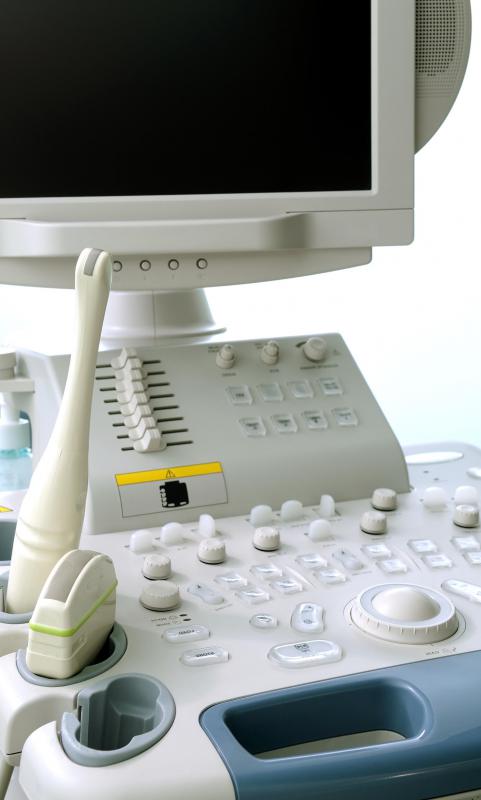At WiseGEEK, we're committed to delivering accurate, trustworthy information. Our expert-authored content is rigorously fact-checked and sourced from credible authorities. Discover how we uphold the highest standards in providing you with reliable knowledge.
What is a Subchorionic Hemorrhage?
A subchorionic hemorrhage is a bleed between the placenta and the wall of the uterus, usually in the first trimester of pregnancy. This is an extremely common complication of pregnancy and sometimes passes undetected. In cases where patients experience symptoms and go to a doctor for treatment, the options for managing this condition vary. There is a slightly elevated risk of miscarriage with this complication, and patients can also develop placental abruption, where the placenta tears away from the uterine wall, posing a serious risk to the pregnancy.
The reasons subchorionic hemorrhages develop are not readily apparent. They do not seem to be strongly linked with any particular behaviors, although activities like smoking can increase the risk of complications if such bleeds develop. Usually, patients notice a subchorionic hemorrhage because they experience bleeding or spotting during pregnancy. A doctor can conduct an ultrasound and spot the distinctive dark clot of blood outside the placenta.

Depending on the size of the hemorrhage, the pregnancy, and the doctor's experience with patients, treatment options can vary considerably. Some doctors tell their patients to continue normal activity levels because they have reasonably healthy pregnancies. Others may recommend bed rest until the bleeding resolves and the body reabsorbs the blood. Clot busting medications to break up the blood clot more quickly can also be an option with subchorionic. In all cases, the patient needs to make a follow-up visit to see if the bleed is resolving or growing larger and to check for complications.

Many pregnancies with a subchorionic hemorrhage follow a normal progress, as the bleed will eventually resolve on its own, although it may take several weeks. Having such a bleed does not necessarily increase the risks of the pregnancy, unless it gets larger or does not clear up within a reasonable period of time. An obstetrician can monitor the patient to see how she is doing and spot complications as early as possible, in order to provide interventions in a timely fashion.

If a subchorionic hemorrhage causes pregnancy loss, the doctor can provide treatment and referrals to counseling services. Patients usually need to wait several months after pregnancy loss to try again, and they are not at increased risk of another miscarriage if they lost a pregnancy because of the hemorrhage. In cases where the bleed causes placental abruption, an emergency delivery may be the best treatment option for saving the pregnancy.
AS FEATURED ON:
AS FEATURED ON:















Discussion Comments
My mom lost her first child to placental abruption. It happened before the baby was ready to come out, and since there was no way to reattach the placenta and my mom was bleeding a lot, they had to operate to remove the fetus.
She was so upset that she thought she would not have the strength to try to get pregnant again. Even though nothing indicated that she would be at risk of a failed pregnancy in the future, the hurt was just too great.
After two years of feeling this way, she decided that she wanted a baby badly enough to face her fear. I am really glad that she did, because otherwise, I wouldn’t be here.
My mother had a subchorionic hemorrhage while pregnant with my baby sister. I remember how scared she was when she started to bleed during her pregnancy. It was like menstrual blood, but it shouldn’t have been happening at that time.
She went for an ultrasound, which showed she had a subchorionic hematoma. However, it was so small that the doctor didn’t seem too concerned about it. He told her that most of them go away on their own, but he would monitor it to make sure it didn’t grow large enough to detach the placenta from the wall of her uterus.
As he suspected, it went away by her next appointment. My little sister was born completely healthy.
Post your comments